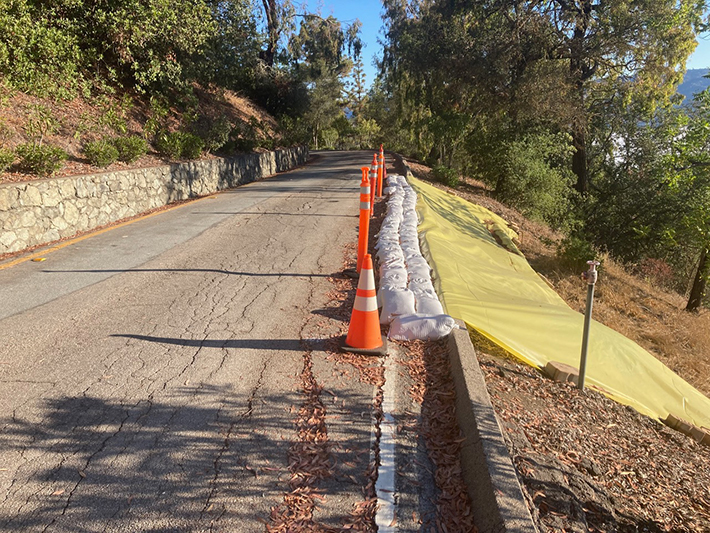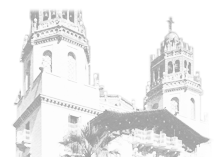
Hearst San Simeon State Historical Monument (Hearst Castle) Road Repair Project
Hearst Castle remains closed at this time due to substantial road culvert failures identified on the road that connects the Hearst Castle Visitor Center to Hearst Castle. The road repair project is estimated to take six to nine months. Once repairs are completed, Hearst Castle will once again welcome the public and resume tour operations. State Parks is committed to keeping the community updated as the project moves forward. Please visit this webpage regularly for updates.
Background on Road Repair Project
A late January 2021 storm brought 20 inches of rain to northern San Luis Obispo County. The culvert failures were discovered during subsequent storm assessments. California State Park staff from both the local district and headquarters began working diligently in conjunction with State Park consultants and the Hearst Corporation to assess the issue and develop a scope of needed repairs. It was determined that all 27 culverts along the 2.25-mile, upper one-way section, of Hearst Castle Road will need to be repaired or replaced.
An emergency contract process has been enacted to encumber funds and begin repairs. The contract was awarded to Madonna Construction and work began in late July 2021. The project is currently estimated to take six to nine months.
About Hearst Castle
Hearst Castle is a registered National and California Historic Landmark, located along the Central Coast envisioned by William Randolph Hearst and realized by California’s first independent female architect Julia Morgan. Hearst Castle’s history begins in 1865 when George Hearst purchased 40,000 acres of ranchland. After his mother’s death in 1919, William Randolph Hearst inherited thousands of acres around San Simeon, and over time, he purchased more. The ranch eventually encompassed about 250,000 acres. The estate, called “the ranch at San Simeon,” or “La Cuesta Encantada” was constructed between 1919 and 1947.
By 1947, when Hearst had to leave the remote location because of his fragile health, the estate was still unfinished even though it comprised 165 rooms and 123 acres of gardens, terraces, pools, and walkways—all built to Hearst’s specifications and showcasing a legendary art collection.
In 1957, California State Parks entered into an agreement, formally known as the “Grant Deed,” to operate and maintain the castle as a historical monument and art museum. Annually, Hearst Castle operates more than 22,000 bus trips between the Castle and Visitor Center. We welcome up to 860,000 visitors to this estate each year.
History of the Road
Construction of a road connecting the coast and William Randolph Hearst’s hilltop estate in San Simeon became a top priority when Hearst hired Julia Morgan to design residences for the property in 1919. The Approach Road was cut into the hillside at the beginning of the construction period to enable materials to be transported from the wharf at the bay in San Simeon, to the hilltop construction site. The road consisted of wide two-lane sections at the bottom of the property, and multiple one-lane sections that circumvented the steep hillsides found on the upper sections of the property.
The initial dirt road cut to the hilltop immediately experienced problems due to water runoff, washouts, and erosion. Roadwork on the hilltop was a constant maintenance issue for Hearst’s construction crew. Every winter, drains and culverts filled and required cleaning. Washouts and drainage issues continued to plague the project through the 1940s. The Approach Road was not paved until after State Parks took ownership of the property through a gift deed with the Hearst Corporation in the late 1950s.



